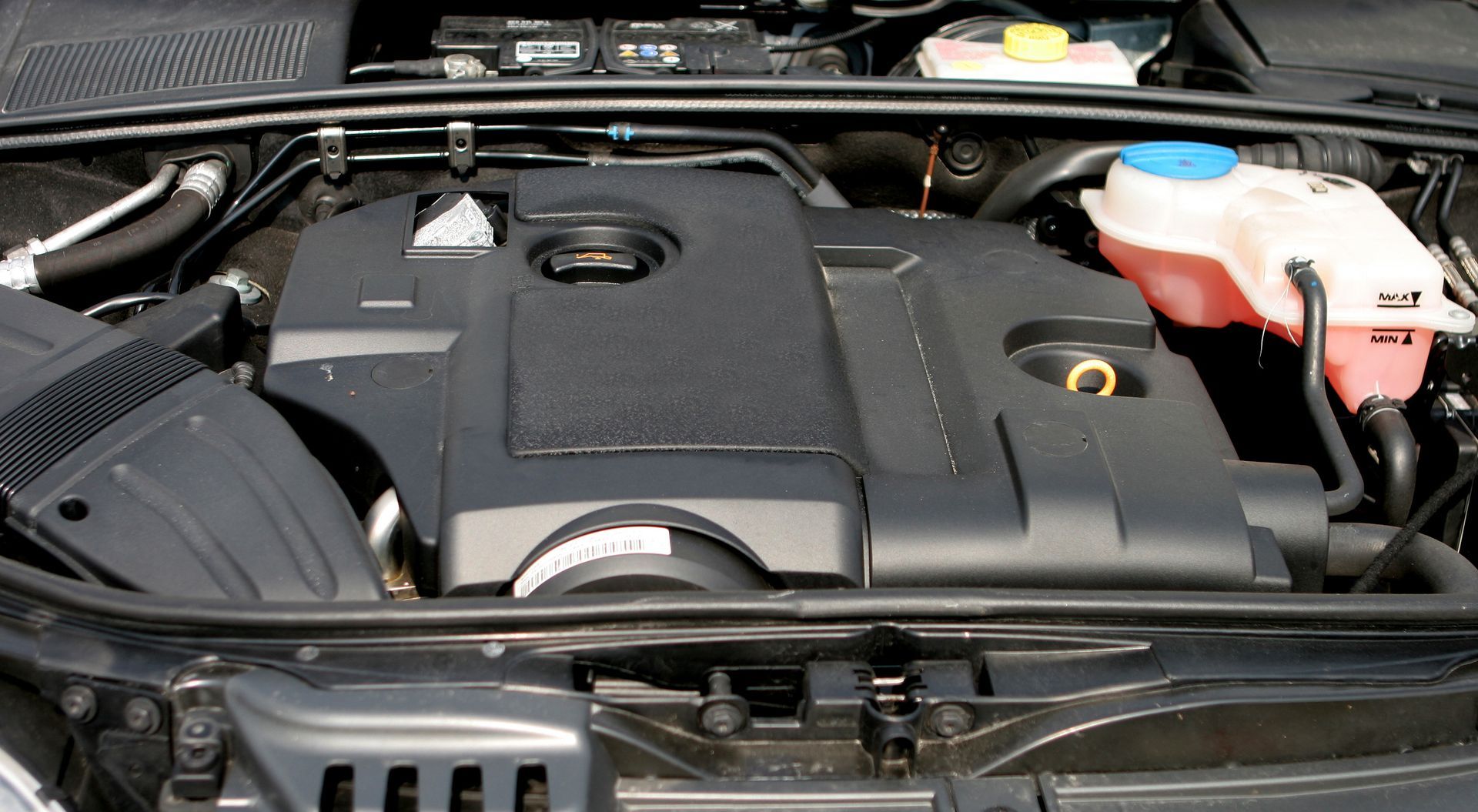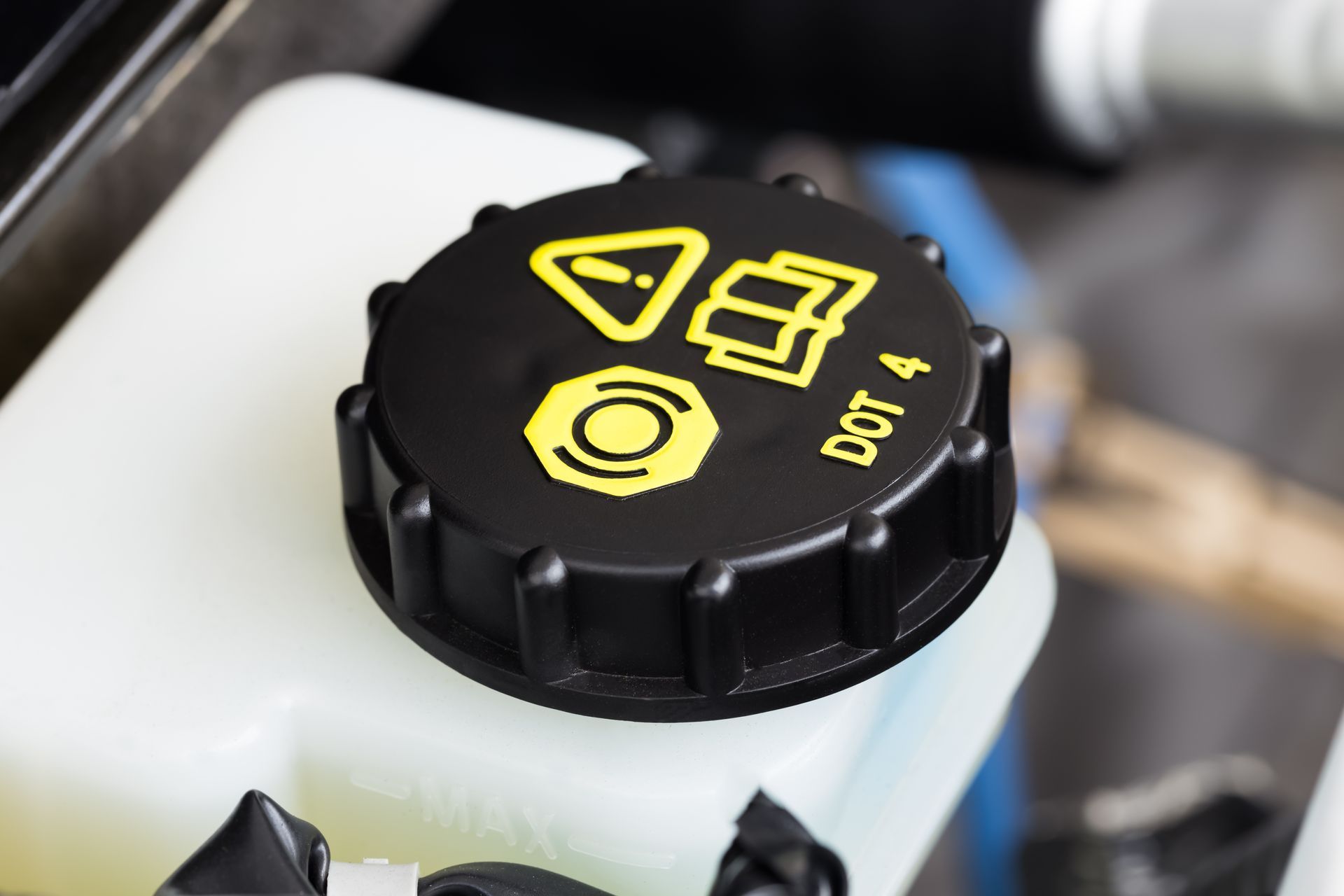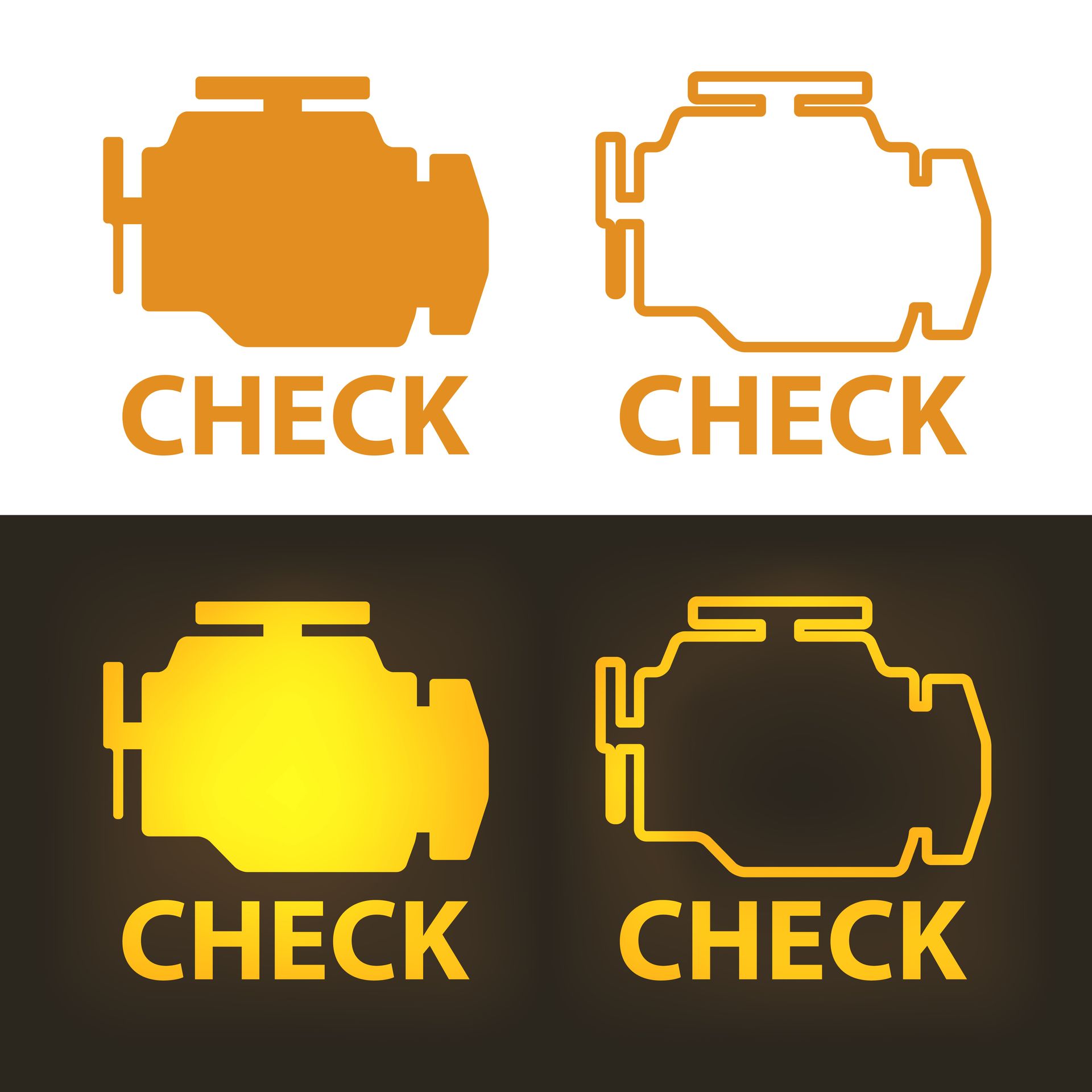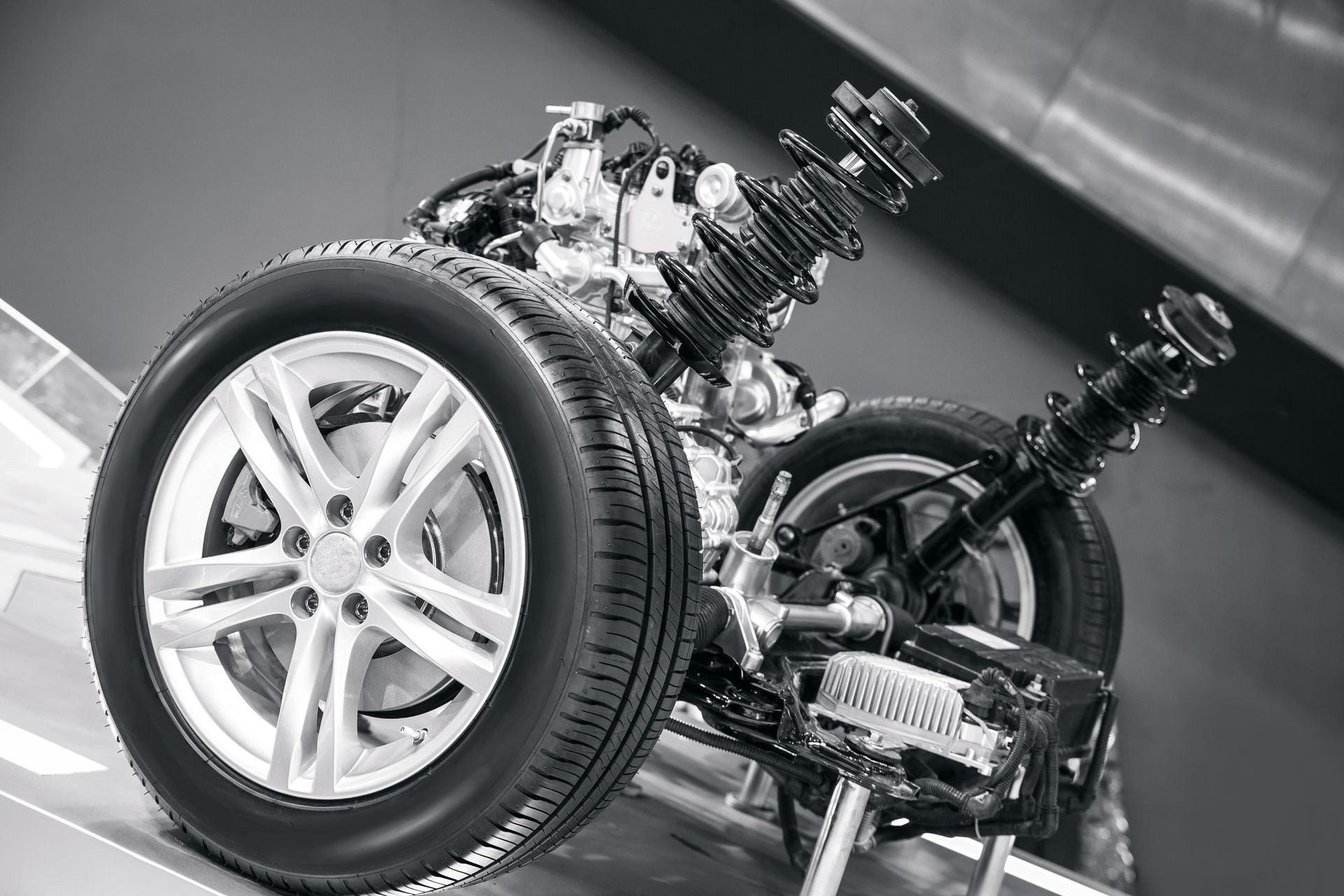So many lights!? The newer your vehicle the more dashboard warning lights you see when you start up your ride. What do you do if a vehicle dashboard light stays on once your vehicle is running? Do not ignore them! Your vehicle has detected a problem. It could be something simple like a door ajar, an unsecured seatbelt, or a parking brake still fully or partially engaged. It may also be something more serious, especially if it’s flashing, like a failing brake system or an engine problem.
What do all those system status lights and codes mean? Your vehicle owner’s manual will explain or you can review the article below for more information. (Keep in mind that simply reading a code does not always identify the problem, it simply indicates where the system detected an issue. The real cause might be somewhere else.)
For more information about a particular component or system visit our Services page or our blog Vehicle Tips library .
What Does a Vehicle Dashboard Light Mean?
By Zach Doell August 21, 2020
 MyFortis / Getty Images
MyFortis / Getty Images
Modern vehicles are complex machines. The average new car has over two dozen computer modules working behind the scenes, a vast network of sensors, and hundreds of electrical wires linking all these components together. This complexity means that there is a lot to go wrong with a car, and when things do, your first indication is often a vehicle dashboard light warning on the instrument panel.
Dashboard warning lights come in a variety of colors. The most serious lights are red, and they typically indicate a major issue or component failure. Yellow or amber lights often indicate a lower-grade hazard or warning, such as the activation of the traction control system when driving on slippery roads. Green and blue lights simply indicate that a feature is engaged, such as the headlights or cruise control.
Below, we’ll walk you through the most common dashboard warning lights, so you’ll know when to call for a tow truck and when not to. Ultimately, the best source of information about your vehicle is the owner’s manual. If you’ve lost your owner’s manual, you may be able to download a digital copy for free on the automaker’s website.
Check Engine Vehicle Dashboard Light
 Ihor Kashurin / Getty Images
Ihor Kashurin / Getty Images
The check engine light, or CEL for short, is one of the most common dashboard warning lights but also one of the least specific. That’s because the check engine light warns of any engine-related issue. This can include something as simple as a loose gas cap, or a more serious issue like a misfire, knocking, or a loss of compression, which could result in premature engine wear or failure.
The check engine light can be red or amber, and it typically features the outline of an engine, the words “service engine soon”, or simply “check engine” in bold letters. Some owner’s manuals also refer to it as the malfunction indicator light or MIL.
It is completely normal for the check engine light to illuminate momentarily when turning the key in the ignition, but it should disappear as soon as the vehicle is running. If not, the system is detecting an issue. Due to the potential for severe engine damage, we don’t recommend driving your vehicle if the check engine light is on. Call for a tow truck and have a repair shop diagnose and fix the issue.
Engine Coolant Temperature Light
 vchal / Getty Images
vchal / Getty Images
The engine temperature light features a red thermometer, and – when illuminated – it indicates that the engine is overheating. This is a serious problem and it can result in catastrophic engine damage, so you should always pull over and turn off your vehicle if you see this warning light. There are a number of issues that can cause the engine to overheat, such as a broken water pump, a stuck thermostat, a leak in the radiator or in one of the coolant hoses, or a broken head gasket.
Transmission Fluid Temperature Light
 Romanovskyy / Getty Images
Romanovskyy / Getty Images
The transmission temperature light is often depicted as a yellow or red thermometer surrounded by a gear, or with the words “AT OIL TEMP”. When illuminated, this light indicates that the transmission is overheating. Like before, you should stop and turn off your vehicle when it’s safe to do so if you see this warning light. Common reasons for an overheating transmission include low fluid levels, worn internal components, as well as high mileage, and sustained heavy towing.
Engine Oil Pressure Vehicle Dashboard Light
 Photoplotnikov / Getty Images
Photoplotnikov / Getty Images
The engine oil pressure light is typically depicted as a red oil can, and it signifies that oil is not circulating properly through the engine. This is a major issue because insufficient oil pressure can cause an engine to wear prematurely or even seize up. Common reasons for low oil pressure include low oil levels, a worn oil pump, and other worn internal components. It’s a good idea to check the engine oil level regularly and change the oil at the manufacturer-specified intervals.
Engine Oil Change Light
 liorpt / Getty Images
liorpt / Getty Images
The oil change light does exactly what you’d expect. It indicates when the engine oil should be changed, based on mileage driven. Most modern vehicles require synthetic oil, which has allowed automakers to stretch oil change intervals from the traditional 3,000-mile limit to anywhere from 5,000 to 15,000 miles in some cases. You may see this indicator displayed as text instead of as a light, such as “Service Engine Soon” or “Oil Change Required”. Some automakers refer to this vehicle dashboard light feature as the oil life indicator as well.
Battery Vehicle Dashboard Warning Light
 Photoplotnikov / Getty Images
Photoplotnikov / Getty Images
The battery indicator light is red in color and it features the outline of a battery with plus and minus symbols. When illuminated, this light indicates that the vehicle’s charging system isn’t functioning properly. The battery could be the issue, but the cause could also be a loose or corroded battery cable, a worn alternator, a broken accessory belt, or another electrical fault in the system.
It’s completely normal to see this light turn on and then off when starting your vehicle. If the light turns on while you’re driving though, you should pull over and stop as soon as it’s safe to do so. Otherwise, the engine will stall once the battery is completely drained, which may only take a few minutes.
Tire Pressure Vehicle Dashboard Light
 Aaltazar / Getty Images
Aaltazar / Getty Images
The tire pressure warning light is depicted as a yellow tire with an exclamation point in the middle. This warning light signifies that one of the vehicle’s tires is underinflated, and – in some modern vehicles – it can indicate which exact tire has low pressure.
The tire pressure monitoring system (or TPMS) is responsible for activating this light. If it turns on while you’re driving, you should pull over and stop as soon as possible. Driving with a flat or underinflated tire is unsafe, as it can drastically alter the vehicle’s handling. Call for a tow truck if any tire is flat, or change the tire if your vehicle is equipped with a spare. If the tires are all still inflated, you should drive to the closest service station to check the pressures and add air if necessary.
Common reasons for this light to turn on include a puncture, a faulty tire pressure sensor, as well as seasonal temperature changes, which can cause a tire to lose pressure gradually.
Reduced Engine Power Light
Modern vehicles are equipped with a failsafe system, or limp mode, that limits engine performance if a major fault is detected. This setup is designed to protect the engine, transmission, and other driveline components from damage. The system triggers the engine light to turn on, and – in some vehicles – a “reduced engine power” readout may also illuminate.
While the vehicle may still be drivable, it’s best to pull over and stop due to the potential for damage. A faulty throttle position sensor is one of the most common reasons for this light to turn on.
Brake Vehicle Dashboard Warning Light
 pialhovik / Getty Images
pialhovik / Getty Images
The brake warning light features a red circle with an exclamation point or “P” in the middle, or simply the text “BRAKE”. When illuminated, this light indicates that either the parking brake is engaged or that there is an issue with the braking system. Try setting and releasing the parking brake when it’s safe to do so. Call for a tow if this doesn’t turn off the light or if the light comes on while you’re driving. Possible causes can include worn brake discs or pads, low brake fluid levels, a stuck parking brake, or an issue with the anti-lock braking system (ABS).
ABS Vehicle Dashboard Warning Light
 pialhovik / Getty Images
pialhovik / Getty Images
The ABS light features a yellow or red circle with the letters “ABS” in the center, and it illuminates when a problem is detected with the anti-lock braking system. This system improves braking performance on slippery roads by pulsing the brakes to prevent the wheels from locking up and skidding. The brakes should still function if this light comes on while you’re driving, but emergency braking performance may be reduced. Common causes for this light to turn on include a faulty wheel speed sensor or an issue with the ABS controller.
Traction Control Vehicle Dashboard Warning Light
 pialhovik / Getty Images
pialhovik / Getty Images
The traction control system works hand in hand with the anti-lock braking system. It selectively applies the brakes to limit the wheels from slipping during acceleration, and it often engages when driving on icy and snowy roads, wet pavement, sand, and gravel. The yellow traction control light – a car with two squiggly lines underneath – illuminates momentarily when the system is intervening. If the light stays on that means there is a problem with the system and it may not operate properly. A faulty wheel speed sensor is one of the most common reasons for this vehicle dashboard light to turn on.
Stability Control Vehicle Dashboard Warning Light
 Photoplotnikov / Getty Images
Photoplotnikov / Getty Images
Electronic stability control, or ESC, is another aspect of the anti-lock braking system. Stability control works to keep the vehicle heading in its intended direction. It does this by monitoring wheel speed and steering inputs and then applying the brakes as necessary to prevent sliding or spinning. Some vehicles have a dedicated “ESC” or “VSC” warning light that illuminates when the system is engaging and stays lit if there is a fault, but many vehicles don’t. In those instances, the traction control warning light turns on instead.
Power Steering Vehicle Dashboard Warning Light
 da vooda / Getty Images
da vooda / Getty Images
The power steering vehicle dashboard light features a red or yellow steering wheel icon, often with an exclamation point on the side. It illuminates when a problem is detected with the steering. If your vehicle is equipped with electric power steering (EPS), you’ll need to take it to a mechanic to get the issue diagnosed. If the car has hydraulic power steering the light often means that the power steering fluid reservoir is low. Top it off and keep an eye out for leaks. Schedule a service appointment if this doesn’t fix the issue.
It is not safe to drive the vehicle if this light comes on, because a lack of power steering assistance will make the car much harder to maneuver.
Airbag Warning Light
 Photoplotnikov / Getty Images
Photoplotnikov / Getty Images
An illuminated airbag light indicates that there is a fault with the vehicle’s airbag system, which is often referred to as the supplemental restraint system (SRS). This vehicle dashboard light indicator typically features a red airbag icon, though in some vehicles it is replaced by “SRS” or “AIR BAG” text.
You should not drive your vehicle if this light turns on because it means that the airbags may not deploy in the event of a crash and the seatbelt pre-tensioners may not tighten appropriately. Have a qualified repair shop diagnose and fix this problem.
Seatbelt Vehicle Dashboard Warning Light
 pialhovik / Getty Images
pialhovik / Getty Images
The seatbelt light does exactly what you’d expect. It features the outline of a person wearing a seatbelt, and it stays illuminated until the driver of the vehicle buckles up. Some vehicles also monitor the front passenger seat. If all occupants have buckled up and the light doesn’t turn off, this may mean that there is a problem with the belt buckle sensor or one of the pressure sensors under the seat.
Automatic Shift Lock Light
 pialhovik / Getty Images
pialhovik / Getty Images
Modern automatic transmissions are equipped with a shift interlock, which prevents the vehicle from shifting out of park until the driver has pressed the brake pedal. In some vehicles, it can also prevent the engine from starting. This reduces the risk of the vehicle rolling away if the gear selector is pushed accidentally. The shift lock light features a green foot within a circle, and it turns on to show when the system is active.
Low Fuel Warning Light
 Aaltazar / Getty Images
Aaltazar / Getty Images
The low fuel vehicle dashboard light features an amber or red gas pump, and it illuminates when the fuel tank is almost out of gasoline or diesel fuel, depending on the type of vehicle. The fuel level required to trigger this warning light can vary from vehicle to vehicle, but it often indicates about one to two gallons of fuel remaining. Additionally, this light may turn on if the gas cap is loose.
Washer Fluid Warning Light
 Aaltazar / Getty Images
Aaltazar / Getty Images
The washer fluid light illuminates when a low level of windshield washer fluid is detected. This vehicle dashboard light is typically yellow and it features a windshield icon. The same symbol is located on the cap of the washer fluid reservoir, so you can easily tell where to add the fluid. Most vehicles only have one washer fluid reservoir and it’s usually found under the hood.
Engine Start-Stop Light
 baloon111 / Getty Images
baloon111 / Getty Images
Many modern vehicles are equipped with automatic start-stop systems that are designed to save fuel in stop-and-go city driving. These systems can shut the engine off when the vehicle is slowing to a stop and quickly turn the engine back on once the brake pedal is released. This reduces the amount of time the engine is idling when sitting in traffic.
The engine start-stop light is typically an “A” surrounded by a circular arrow, and it can indicate a few different things. It may illuminate in a green or blue color to show that the system is active, or in an amber color to show that the system has been disabled. An exclamation point next to this icon usually indicates a fault with the start-stop system.
Vehicle Dashboard Security Light
 LeshkaSmok / Getty Images
LeshkaSmok / Getty Images
The security light may turn on for a few reasons. It may illuminate and disable the ignition system if the incorrect key is inserted. This vehicle dashboard light may indicate a fault with the ignition if it illuminates while driving. The most common reason is to deter thieves. When the vehicle is parked and locked, it’s typical for the light to blink occasionally to indicate that the alarm system is armed. The design of this indicator light can vary, but it usually features the outline of a car with either a key or a padlock icon.
Glow Plug Light
 Aaltazar / Getty Images
Aaltazar / Getty Images
Diesel engines are equipped with glow plugs, which are designed to heat up the combustion chamber and assist with starting the engine when it’s cold. It takes a few seconds for glow plugs to sufficiently warm up the engine air temperature, and they shut off once it is hot enough.
The amber glow plug light – a squiggle with two loops – illuminates to show that the glow plugs are warming up. The light turns off once the engine is ready to start. If the glow plug light blinks or remains on, it indicates that there may be a problem with this system and the vehicle may be difficult to start.
DPF Vehicle Dashboard Light
 Hampi / Getty Images
Hampi / Getty Images
In addition to glow plugs, diesel vehicles are also equipped with a diesel particulate filter (DPF), which collects engine soot and ash as it travels through the exhaust. This filter improves emissions and reduces the amount of smoke coming from the tailpipe, however it can become clogged over time.
The DPF light illuminates when the filter is blocked and requires cleaning or replacement. This warning light is usually amber in color, and the design often features a box filled with small circles or a puff of smoke passing through a line of circles.
DEF Light
The diesel exhaust fluid light, or DEF light, is the third warning light that diesel vehicle owners should be aware of. This light looks very similar to the DPF light with the addition of two droplets to symbolize the fluid. The light turns on when a low level of diesel exhaust fluid is detected, often followed by text warnings to refill the DEF reservoir. This fluid is a mixture of urea and deionized water that is injected into the exhaust system to reduce nitrogen oxide emissions. Another common name for DEF is AdBlue.
You should refill the DEF tank as soon as possible when this light turns on. Otherwise, the engine could enter a reduced-power mode or stop altogether if the tank is fully empty.
Cruise Control Vehicle Dashboard Light
 Aaltazar / Getty Images
Aaltazar / Getty Images
The cruise control light typically features a speedometer icon, and it can indicate a few different things depending on the color. Green often means that the cruise control has been set. An amber or yellow light can indicate that cruise control is enabled but not set, or that there is a problem with the system. Refer to your owner’s manual for specific information about the cruise control system in your vehicle.
Adaptive Cruise Control Light
 da vooda / Getty Images
da vooda / Getty Images
Adaptive cruise control uses forward-facing cameras and sensors to maintain a set cruising speed and distance to the car ahead. When engaged, adaptive cruise control can slow the vehicle down if the car ahead begins to slow down. Conversely, it can return the vehicle to the desired cruising speed if the car ahead accelerates or merges into another lane.
There are a few common vehicle dashboard lights related to the adaptive cruise control system. You may see text that reads “ACC”, a speedometer icon with a car behind it, or a car with waves in front of it. These lights typically indicate that the system is enabled. A series of bars between two vehicle icons usually indicates the desired following distance to other cars. Refer to your owner’s manual for additional information about this system.
Forward Collision Warning Light
 VICTOR / Getty Images
VICTOR / Getty Images
Forward collision warning systems use a network of cameras and sensors to detect vehicles ahead and alert the driver if a collision is likely. The abilities and limitations of these systems can vary widely from vehicle to vehicle though. For instance, some systems are packaged with automatic emergency braking that can slow down the vehicle without driver input. Some systems aren’t, and they rely entirely on the driver to take action and apply the brakes. Other differences include the ability to detect pedestrians and cyclists.
The vehicle dashboard lights can also vary. Common alerts include two car icons separated by a star, text that reads “FCW” or “FCA”, audible beeping, and – if equipped – a rapid blinking from the head-up display. Again, you should check your owner’s manual for the most accurate information about your car’s safety features.
Lane Departure Warning Light
 Marin Tomas / Getty Images
Marin Tomas / Getty Images
As its name suggests, the lane departure warning system alerts the driver if the vehicle is drifting out of its lane. Common alert methods include “LDW” or “LDA” warning lights, a symbol of a car veering out of a lane, audible beeping, and – if bundled with lane keep assist – a tug at the steering wheel to correct the vehicle’s path.
Parking Assist Light
 Marin Tomas / Getty Images
Marin Tomas / Getty Images
If your vehicle is equipped with parking sensors, you might see a warning light with a “P” and a triangle separated by waves. This symbol may also be accompanied by audible beeping or a bird’s eye view of the vehicle. It indicates that either the front or rear bumpers are in close proximity to an object, but it may also indicate a potential issue with this system. Refer to your owner’s manual for additional vehicle dashboard light info.
Blind Spot Monitoring Light
 Marin Tomas / Getty Images
Marin Tomas / Getty Images
Blind-spot monitoring systems use sensors at the sides and rear of the vehicle to detect other cars that may be obstructed by the driver’s field of view. These systems typically alert the driver by illuminating an icon – two staggered cars separate by waves – in the side mirror closest to the approaching vehicle. You may also see “BSM” or “BLIS” lights on the dashboard. These lights can indicate that the system is operating, but they can also indicate a potential issue. Again, refer to your owner’s manual for more detailed information on any vehicle dashboard light.
Drowsiness Monitoring Vehcile Dashboard Light
 Mercedes-Benz USA
Mercedes-Benz USA
Driver drowsiness monitoring systems use a number of sensors to detect if the driver is paying attention to the road. Most systems look for telltale signs like constant steering wheel corrections and extended driving distances without a break, but some advanced systems can also monitor eye movements. These systems typically alert the driver by flashing a coffee cup symbol on the dashboard, as well an “attention assist” or “time for a break” message.











